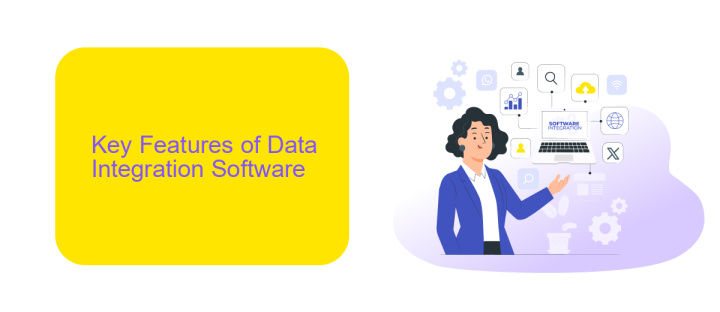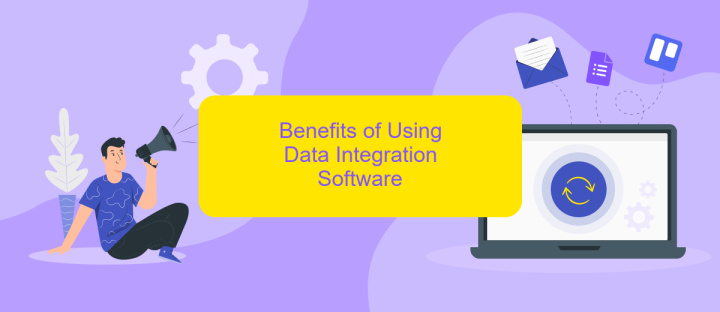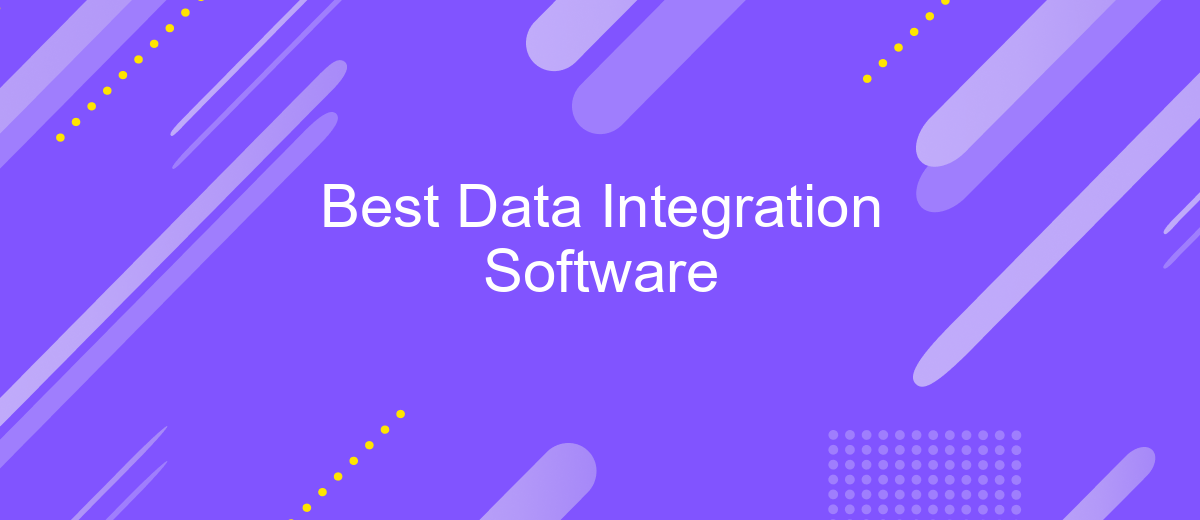Best Data Integration Software
In today's data-driven world, seamless integration of diverse data sources is crucial for informed decision-making and operational efficiency. The best data integration software simplifies this complex process, enabling businesses to consolidate, transform, and manage data from various platforms effortlessly. This article explores top data integration tools that stand out in the market, helping organizations achieve robust data connectivity and insights.
Introduction
In today's data-driven world, businesses rely heavily on seamless data integration to ensure smooth operations and informed decision-making. The right data integration software can transform disparate data sources into a cohesive system, providing a unified view of information. This not only enhances productivity but also drives strategic insights.
- Streamlined data flow between multiple platforms
- Real-time data synchronization
- Improved data accuracy and consistency
- Enhanced business intelligence and analytics
One such tool that excels in facilitating these integrations is ApiX-Drive. ApiX-Drive offers a user-friendly interface and robust features that simplify the process of connecting various applications and automating workflows. By leveraging ApiX-Drive, businesses can effortlessly integrate their data sources, ensuring that critical information is always up-to-date and readily accessible. This section will explore the best data integration software available, highlighting their key features and benefits.
Key Features of Data Integration Software

Data integration software is essential for combining data from various sources into a unified view. One of the key features is the ability to connect to a wide range of data sources, including databases, cloud services, and on-premises systems. This ensures that all relevant data can be accessed and integrated seamlessly. Additionally, robust data transformation capabilities allow users to clean, normalize, and enrich data before it is loaded into the target system, ensuring high-quality and consistent data across the organization.
Another critical feature is real-time data processing, which enables organizations to make timely decisions based on the most current information. Furthermore, user-friendly interfaces and automation tools, such as those offered by ApiX-Drive, simplify the setup and management of data integrations, reducing the need for extensive technical expertise. Security features, including data encryption and access controls, are also vital to protect sensitive information during the integration process. Finally, scalability ensures that the software can handle growing data volumes and increasing complexity as the organization expands.
Benefits of Using Data Integration Software

Data integration software streamlines the process of combining data from various sources, enhancing efficiency and accuracy in data management. By centralizing data, organizations can make more informed decisions and gain a comprehensive view of their operations.
- Improved Data Quality: Integration software ensures consistent and accurate data across all platforms, reducing errors and discrepancies.
- Time and Cost Efficiency: Automating data integration processes saves time and reduces the need for manual data entry, cutting down on labor costs.
- Enhanced Collaboration: With centralized data, teams can easily access and share information, fostering better collaboration and communication.
- Scalability: Integration tools like ApiX-Drive allow businesses to seamlessly scale their operations by integrating new data sources as they grow.
- Real-Time Data Access: Real-time data integration provides up-to-date information, enabling quicker responses to changing business conditions.
Overall, data integration software like ApiX-Drive plays a crucial role in modern data management strategies. By automating and streamlining data processes, it helps organizations maintain data integrity, improve operational efficiency, and support data-driven decision-making.
Top Data Integration Software Solutions

Choosing the right data integration software is crucial for businesses aiming to streamline their operations and enhance data accessibility. With numerous options available, it can be challenging to determine which solution best suits your needs. Below, we highlight some of the top data integration software solutions that stand out in the market.
These platforms offer a range of features designed to simplify the integration process, from user-friendly interfaces to robust data handling capabilities. Each solution is tailored to meet different business requirements, ensuring that you can find the perfect fit for your organization.
- Informatica PowerCenter
- Talend Data Integration
- Microsoft SQL Server Integration Services (SSIS)
- Apache Nifi
- ApiX-Drive
ApiX-Drive, for instance, provides an intuitive platform for setting up integrations without the need for coding. It supports a wide range of applications and services, making it an excellent choice for businesses looking to automate data workflows efficiently. By leveraging these top solutions, your company can achieve seamless data integration and improved operational efficiency.
Choosing the Right Data Integration Software for Your Needs
Choosing the right data integration software involves evaluating your specific needs and the capabilities of various tools. Start by identifying the types of data sources you need to connect and the volume of data you plan to integrate. Consider whether the software supports real-time data synchronization or batch processing, as this can significantly impact your workflow. Additionally, evaluate the ease of use, scalability, and compatibility with your existing systems.
Another crucial factor is the support and features offered by the software. For instance, ApiX-Drive provides an intuitive platform for setting up integrations without requiring extensive technical knowledge. It supports a wide range of applications and offers automated workflows to streamline data transfer processes. By leveraging such a service, you can reduce manual intervention and ensure data consistency across your systems. Ultimately, the right software should align with your business goals, budget, and technical requirements to provide a seamless data integration experience.
FAQ
What is data integration software?
Why is data integration important for businesses?
How does data integration software work?
What are the common features of data integration software?
What should I consider when choosing data integration software?
Apix-Drive is a universal tool that will quickly streamline any workflow, freeing you from routine and possible financial losses. Try ApiX-Drive in action and see how useful it is for you personally. In the meantime, when you are setting up connections between systems, think about where you are investing your free time, because now you will have much more of it.

